Renovating your home office can lead to a remarkable boost in productivity by creating a space that is both comfortable and tailored to your specific needs. By incorporating ergonomic furniture, optimized lighting, and the latest technology, you can design an environment that minimizes distractions and enhances your overall efficiency.
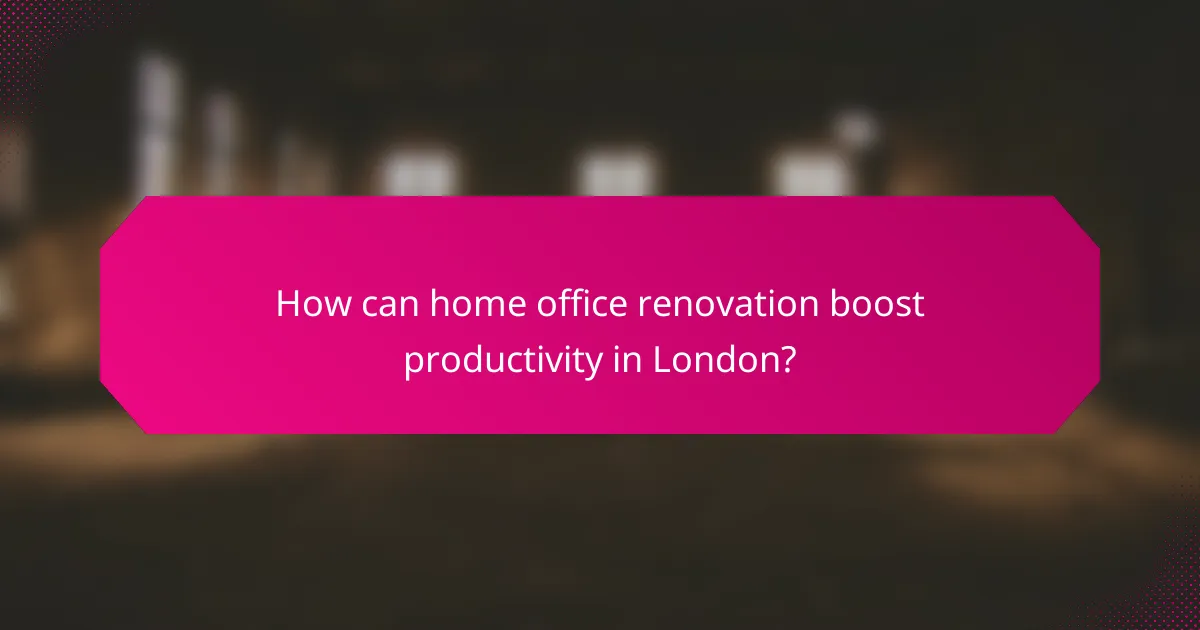
How can home office renovation boost productivity in London?
Home office renovation can significantly enhance productivity in London by creating a workspace that is comfortable, well-lit, and tailored to individual needs. By focusing on ergonomic furniture, optimized lighting, and a dedicated workspace design, you can foster an environment that minimizes distractions and maximizes efficiency.
Ergonomic furniture for comfort
Investing in ergonomic furniture is crucial for maintaining comfort during long working hours. Chairs that support the lower back and desks that allow for proper posture can prevent fatigue and discomfort, which are common productivity killers. Look for adjustable options that can accommodate different body types and preferences.
Consider adding accessories like keyboard trays and monitor stands to further enhance ergonomics. These adjustments can help reduce strain on your wrists and neck, making it easier to focus on tasks without physical distractions.
Optimized lighting solutions
Proper lighting is essential for a productive home office. Natural light is ideal, so position your desk near windows whenever possible. If natural light is limited, invest in adjustable LED lights that mimic daylight to reduce eye strain and improve mood.
Incorporating task lighting can also help illuminate specific areas, such as your desk or reading nook. Aim for a combination of ambient and task lighting to create a well-lit environment that supports various activities throughout your workday.
Dedicated workspace design
A dedicated workspace design helps to establish boundaries between work and personal life, which is particularly important in a home setting. Choose a specific area in your home that is quiet and free from distractions, and personalize it to reflect your style while keeping functionality in mind.
Consider using room dividers or curtains to separate your workspace from living areas. This can enhance focus and signal to others that you are in work mode. Additionally, ensure that your workspace is equipped with the necessary technology and supplies to minimize interruptions during your work hours.
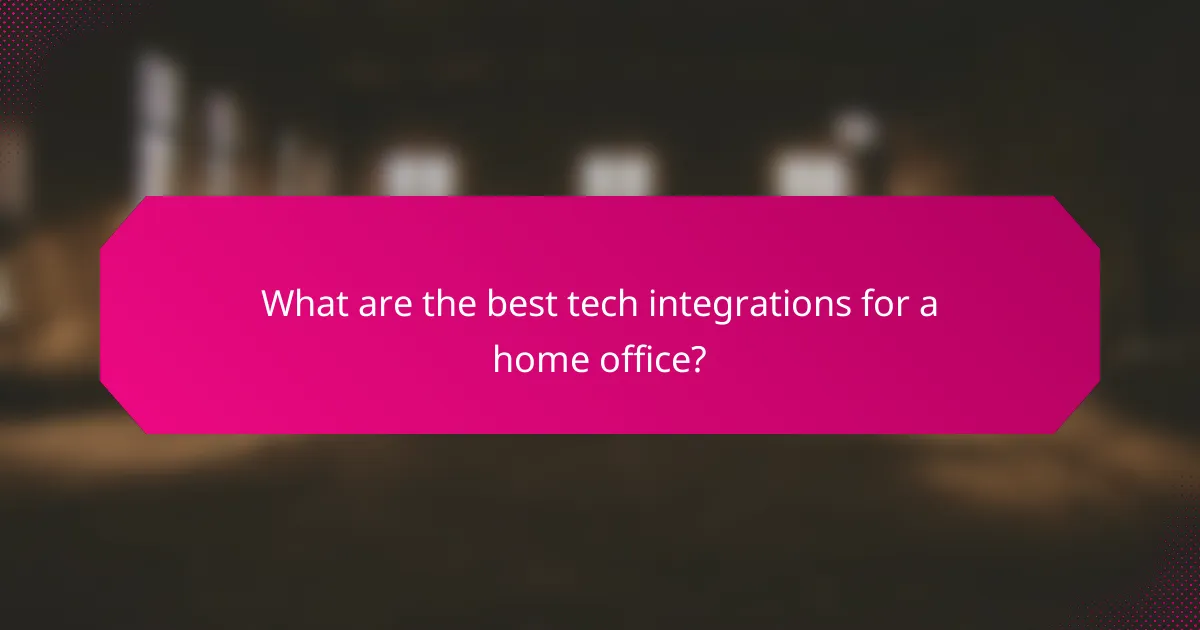
What are the best tech integrations for a home office?
The best tech integrations for a home office enhance productivity, comfort, and overall efficiency. Key technologies include smart lighting systems, high-speed internet solutions, and noise-canceling technology, each contributing to a more effective work environment.
Smart lighting systems
Smart lighting systems allow you to control the brightness and color of your workspace with ease. These systems can be programmed to adjust automatically based on the time of day or your specific tasks, helping to reduce eye strain and improve focus.
Consider options like LED bulbs that can change color temperature, promoting alertness during the day and relaxation in the evening. Popular brands often offer compatibility with voice assistants, making adjustments simple and hands-free.
High-speed internet solutions
High-speed internet is crucial for seamless communication and efficient work in a home office. Look for internet plans that offer speeds of at least 100 Mbps to support video conferencing, large file uploads, and multiple devices running simultaneously.
Fiber-optic connections are often the best choice for speed and reliability, though cable and DSL can also suffice depending on your location. Ensure your router is up to date and consider mesh systems for larger spaces to maintain strong connectivity throughout your office.
Noise-canceling technology
Noise-canceling technology helps create a quieter workspace, allowing for better concentration. Options include noise-canceling headphones and soundproofing solutions like acoustic panels that absorb sound and reduce distractions.
When selecting headphones, look for models that offer both active and passive noise cancellation for maximum effectiveness. For soundproofing, consider installing wall panels or using heavy curtains to minimize external noise interference.
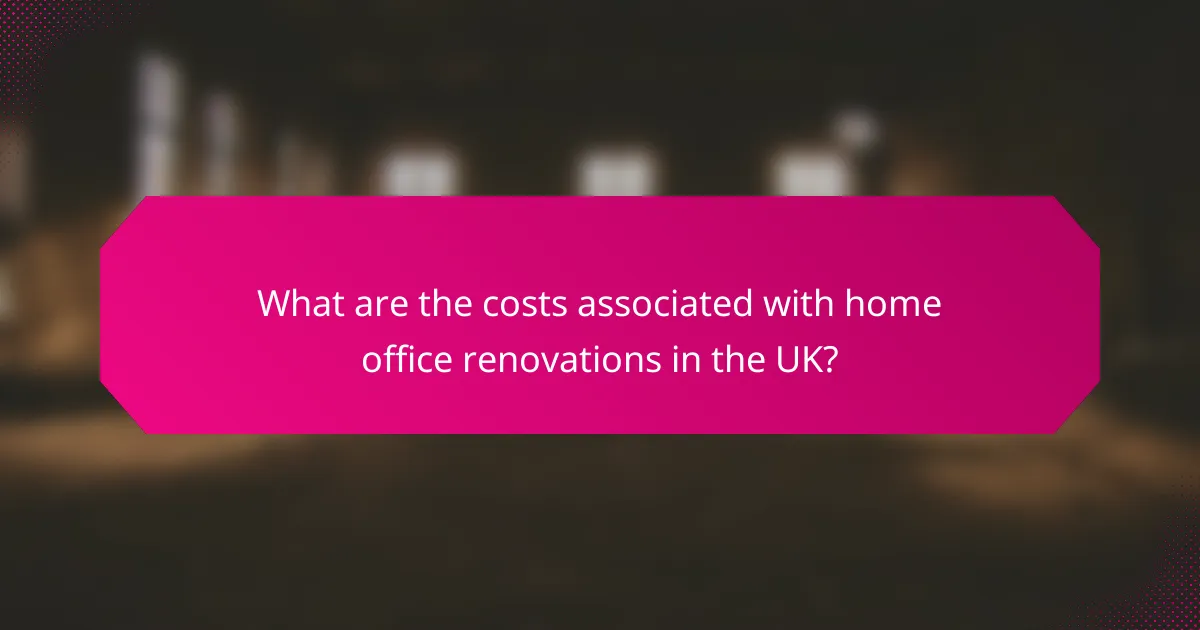
What are the costs associated with home office renovations in the UK?
The costs of home office renovations in the UK can vary widely based on the scope of the project, materials used, and the level of customization desired. Generally, homeowners can expect to spend anywhere from a few hundred to several thousand pounds to create a functional and comfortable workspace.
Average renovation costs
On average, a basic home office renovation in the UK may range from £1,000 to £5,000. This typically includes essential upgrades such as painting, new flooring, and basic furniture. For more extensive renovations, including custom cabinetry and advanced technology integration, costs can escalate to £10,000 or more.
Factors influencing these costs include the size of the space, the quality of materials chosen, and whether professional contractors are hired. DIY projects can help reduce expenses but may require more time and effort.
Budget-friendly options
For those looking to renovate on a budget, consider focusing on cosmetic changes that can significantly enhance the workspace without breaking the bank. Simple updates like repainting walls, adding shelving, or purchasing second-hand furniture can make a big difference.
Additionally, integrating technology can be done affordably by using existing devices or opting for budget-friendly tech solutions. For example, using a laptop stand or a simple desk organizer can improve ergonomics without substantial investment.
Financing solutions
Homeowners may explore various financing options to fund their home office renovations. Personal loans, credit cards, or home equity loans are common methods for covering renovation costs. It’s essential to compare interest rates and terms to find the most suitable option.
Some local councils may also offer grants or incentives for home improvements, particularly if the renovations enhance energy efficiency. Researching these options can provide additional financial relief and make renovations more accessible.
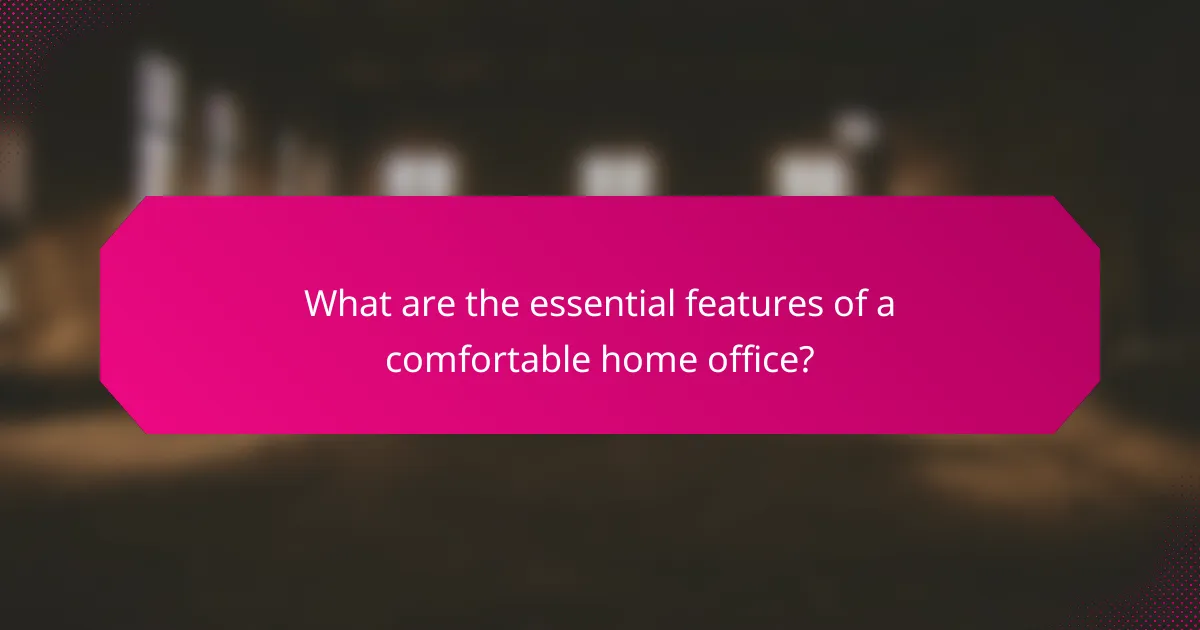
What are the essential features of a comfortable home office?
A comfortable home office should prioritize ergonomics, functionality, and personal style. Key features include effective temperature control, personalized decor, and efficient storage solutions to enhance productivity and create a pleasant working environment.
Temperature control systems
Temperature control systems are vital for maintaining a comfortable work environment. Options include programmable thermostats, space heaters, or air conditioning units that allow you to adjust the temperature according to your preferences.
Consider investing in smart thermostats that can learn your schedule and optimize energy use. Aim for a temperature range of around 20-22°C (68-72°F) for optimal comfort while working.
Personalized decor elements
Personalized decor elements can significantly enhance your home office’s ambiance and make it more inviting. Choose colors, artwork, and accessories that reflect your personality and inspire creativity.
Incorporate plants, motivational quotes, or a vision board to create a stimulating environment. Ensure that your decor is not overly distracting, as this can hinder focus and productivity.
Storage solutions for organization
Effective storage solutions are essential for keeping your home office organized and clutter-free. Consider using shelves, filing cabinets, or storage bins to categorize and store documents and supplies efficiently.
Utilize vertical space with wall-mounted shelves and invest in multi-functional furniture, like desks with built-in storage. Regularly declutter to maintain an organized workspace, which can lead to improved focus and productivity.
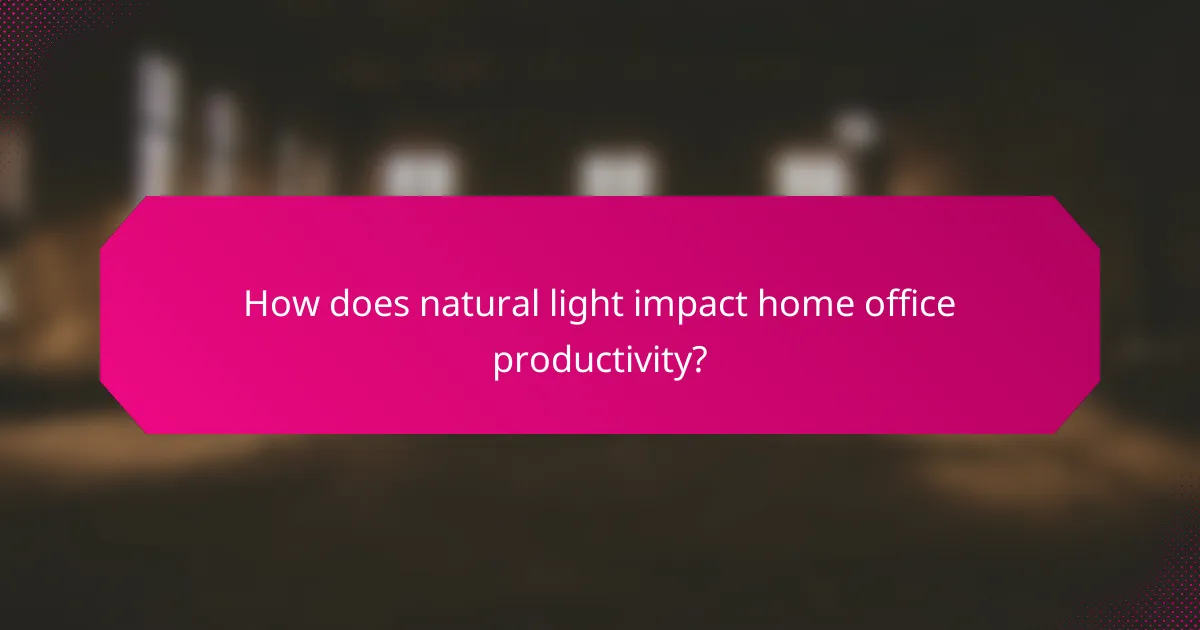
How does natural light impact home office productivity?
Natural light significantly enhances home office productivity by improving mood and reducing eye strain. Exposure to daylight can lead to better focus and increased energy levels, making work more efficient.
Benefits of natural light exposure
Natural light exposure can boost creativity and cognitive function, leading to higher productivity levels. Studies suggest that employees working in well-lit environments report greater job satisfaction and lower fatigue.
Additionally, natural light helps regulate circadian rhythms, which can improve sleep quality. Better sleep translates to enhanced alertness and performance during working hours.
Window treatment options
Choosing the right window treatments can maximize natural light while minimizing glare. Options like sheer curtains allow sunlight to filter through without obstructing the view, creating a bright yet comfortable workspace.
Blinds and shades offer flexibility; you can adjust them to control light levels throughout the day. Consider materials that reflect heat while still allowing light, such as solar shades, to maintain a comfortable temperature in your home office.

What are the prerequisites for a successful home office renovation?
Successful home office renovation requires careful planning and consideration of space, personal work habits, and technology needs. By addressing these factors, you can create an environment that enhances productivity and comfort.
Assessing available space
Begin by measuring your available space to determine how much room you have for furniture and equipment. Consider not only the dimensions but also the layout, including windows and electrical outlets, which can influence your design choices.
Think about the flow of movement within the office. Ensure there is enough space for a desk, chair, and any additional storage or technology you might need. A common guideline is to allow at least 60 cm of clearance around the desk for easy access.
Identifying personal work habits
Your work habits significantly influence the design of your home office. Take note of how you work best—do you prefer a quiet space, or do you thrive in a more dynamic environment? This will help you decide on soundproofing, lighting, and decor.
Consider the tools and technology you use regularly. For instance, if you often collaborate via video calls, ensure your space is equipped with good lighting and a suitable background. Creating zones for different tasks can also enhance focus and efficiency.
